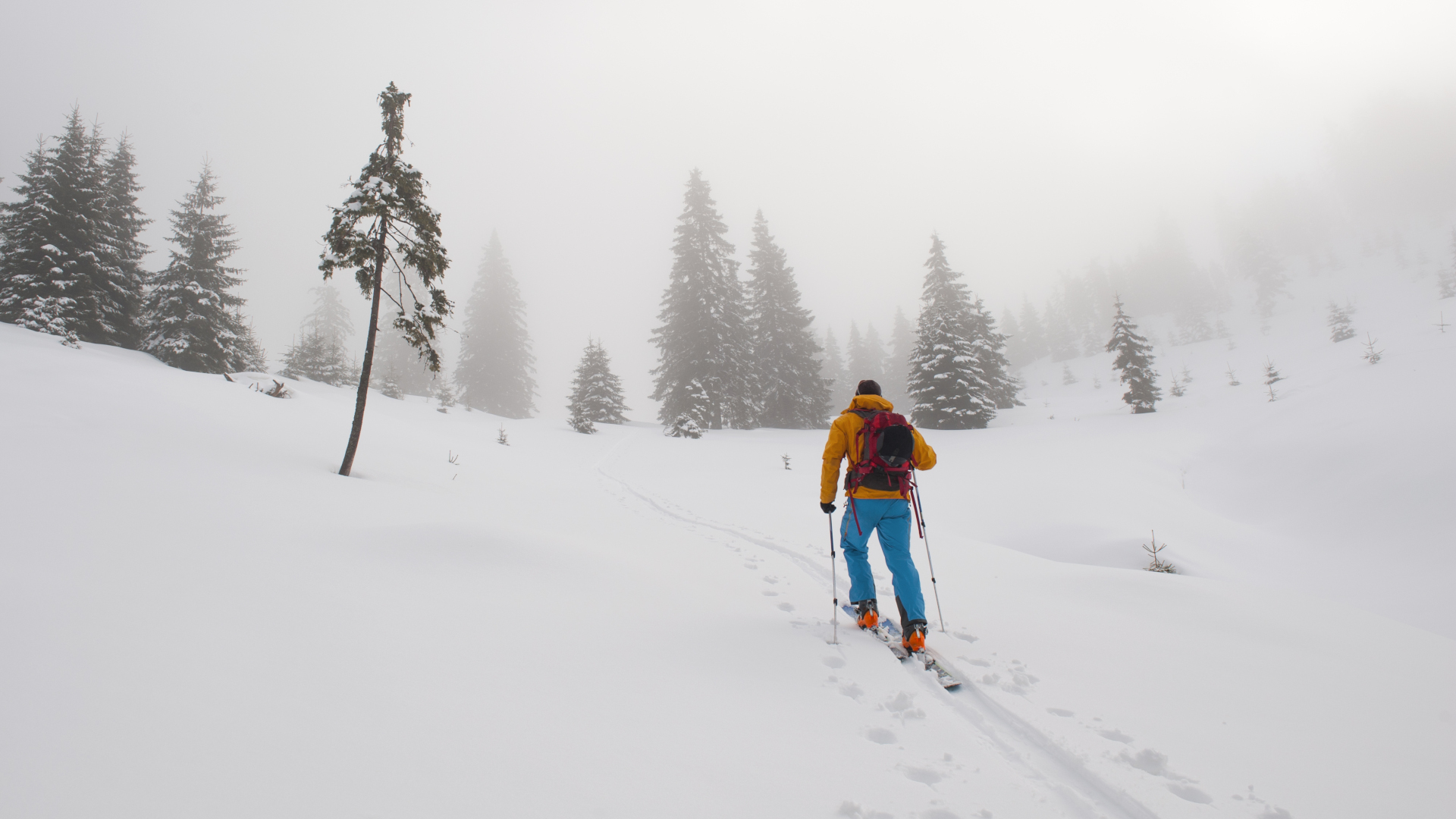What – and where exactly – is sidecountry?
We explain this skiing and snowboarding term, and provide tips to keep you safe in the places ski patrol can’t

On any given power day in Vail, you’ll see the same sight – dozens of skiers and snowboarders hiking up to a gate above Chair 22 to ski the famed sidecountry terrain of East Vail Chutes. Once there, skiers and riders descend massive cliffs and drops with powder stashes galore. When they reach the bottom, there’s no lift to get back to the resort – they’ll need to have left a car there, take the bus or rely on the kindness of strangers.
Sidecountry access is becoming increasingly popular among winter sports enthusiasts seeking to escape the crowds and find untouched powder, so much so that some resorts even advertise it. But the easy access may give some skiers an impression of safety that is a falsehood – practically every winter, a skier dies in east Vail.
If you’ve heard about sidecountry skiing and are already brushing off your ski pants eager to give it a go this winter, read on to understand exactly what it means, and how to keep yourself safe when you leave the ski resort boundary.

What is sidecountry?
In all honesty, sidecountry isn’t really a thing. When you’re skiing in-bounds at a resort, you can term it frontcountry skiing, and that’s a place where bombs are chucked to force avalanches, runs are groomed and obstacles are removed or marked by poles. But the moment you leave the frontcountry – no matter how you get there – you’re in the backcountry.
Sidecountry, however, has become a common term assigned to terrain that you can access via ski lifts, meaning you don’t need specialized uphill skiing equipment such as skins, AT skis, touring boots or a splitboard to get there. You can hop on the chairlift in your regular alpine set up and, perhaps with a little sidestepping or herringbone action, make your way into the backcountry.

Is sidecountry skiing dangerous?
You might not need special gear to get to the sidecountry, but once you’re there, you really should have a lot of the same specialized equipment and skill as backcountry skiers, and by that, we don’t just mean powder skis.
The dangers that exist in the backcountry – avalanche risk and hidden obstacles – are there even though you might feel pretty safe, having got here on the lift. After all, it just feels like an extension of the resort. But it isn’t. What’s essential to know is that, the moment you cross that boundary line from the resort into so-called sidecountry, there’s no ski patrol to help you or avalanche mitigation work being done. Sidecountry runs can look gnarly or relatively tame, as in the Minturn Mile accessed from the other side of Vail resort, but they’re never immune to slides.
All the latest inspiration, tips and guides to help you plan your next Advnture!
That means that you should be traveling with a ski backpack filled with avalanche gear – an avalanche beacon and probe for starters and possibly even airbags. It’s also not a bad idea to have a map of the area and a compass, since people can and do get lost in the sidecountry. You should be an experienced powder skier and have researched the terrain in advance, to be sure that it’s within your ability level. If you find yourself at the top of a mandatory cliff with no way to bail out, ski patrol isn’t coming to your aid.

What’s so great about sidecountry skiing?
If sidecountry skiing is just as dangerous as backcountry skiing, is there any real benefit? Well, sure. It has all the joys of backcountry skiing with less effort. That means you don’t have to spend hours hiking in, so you can access some incredible skiing without devoting your whole day to the endeavor. You can even pair it with a day of skiing groomers or get a great line in before heading to work. There are lots of great reasons to enjoy sidecountry skiing, just make sure you’re prepared for heading to the backcountry – because that’s exactly where you’re going.
Julia Clarke is a staff writer for Advnture.com and the author of the book Restorative Yoga for Beginners. She loves to explore mountains on foot, bike, skis and belay and then recover on the the yoga mat. Julia graduated with a degree in journalism in 2004 and spent eight years working as a radio presenter in Kansas City, Vermont, Boston and New York City before discovering the joys of the Rocky Mountains. She then detoured west to Colorado and enjoyed 11 years teaching yoga in Vail before returning to her hometown of Glasgow, Scotland in 2020 to focus on family and writing.

